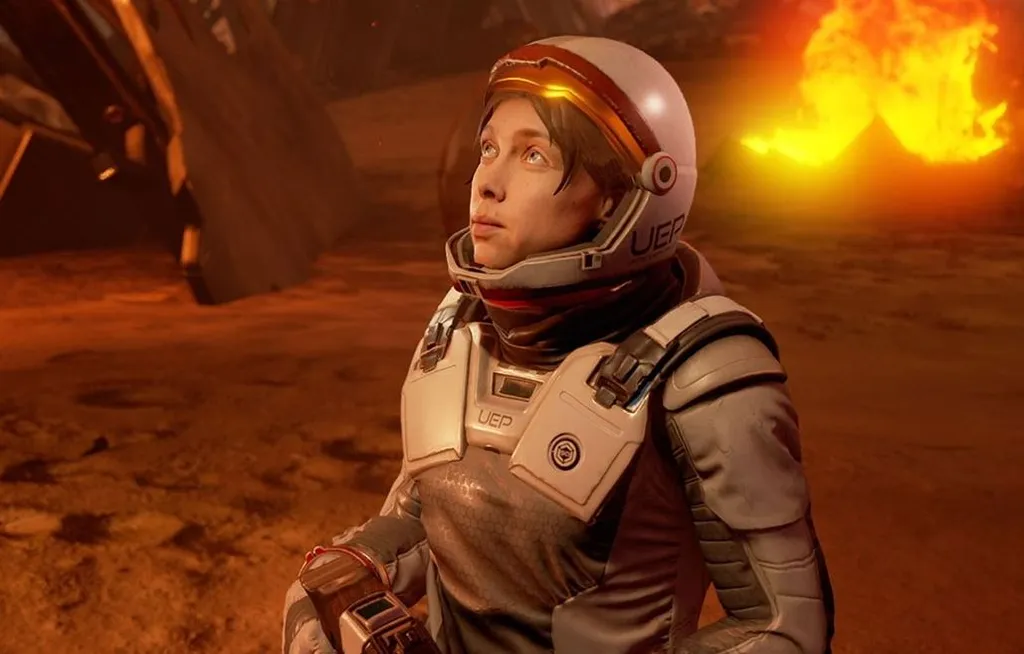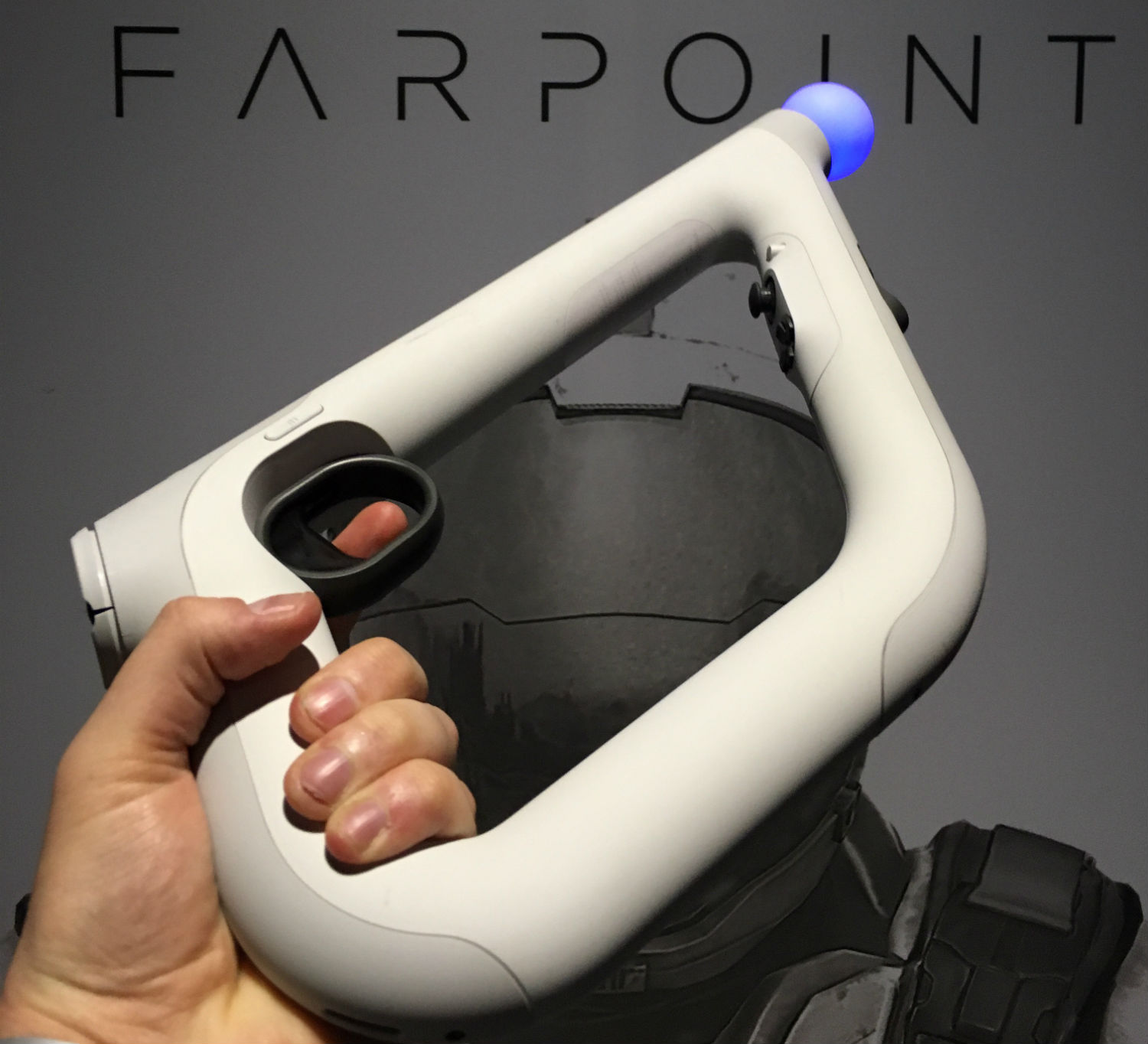It took me a little time, but last week I finally took the internet’s cruelly-delivered advice, manned up, and shot my way through Farpoint. There was some screaming, some jumping and some “lalalala I’m not really here”-ing, but by god I got there. By the time all the spider-slaying and pants-changing was done though, I have to admit it wasn’t my bravery that lingered in my mind, nor was it the PlayStation Aim Controller-fuelled action.
Believe it or not, it was that thing that’s so often forgotten when making a first-person shooter: the story.
Farpoint’s story is a little odd in that, though the player must trek through a hostile alien planet on their own, it’s not their tale that’s the focus. Instead, you retrace the footsteps of two scientists, Dr. Eva Tyson and Dr. Grant Moon, that landed on the planet before you. Between the game’s linear levels, you’ll discover databanks that piece together more of the pair’s time on this strange new world, while certain sections throughout the gameplay also allow you to play back moments from when they stood in the same place.
Though you may start off wondering exactly why you should be so interested in two strangers when your own adventures are surely enough to talk about, Eva and Grant’s story quickly becomes one of the most engaging aspects of Farpoint. Eva, a passionate and dedicated scientist in her own right, devotes herself to finding a way back home, determined to salvage a ship and make it back. As she makes her own journey across the planet in search of survivors, Grant stays back at a makeshift home base, studying up on the lay of the land. The two communicate over an intercom, revealing more about themselves as they go.
It may seem strange to create a VR game with a dedicated controller that delivers incredible immersion then take the viewer away from their own body, but in doing so Farpoint manages to grow a bond between two people you haven’t even met. What developer Impulse Gear instead creates is theatre; you watch two people that feel like they’re really there bounce off of each other with unparalleled intimacy, like you’re simply poking your head through a wall in a private space and watching what unfolds. Every frown, raised eyebrow and shake of the head carries much more weight than it does on the flat screen. Tellingly, the story is penned by Rob Yescombe, who also worked on the brilliant third-person VR narrative, The Invisible Hours, and recently joined Valve. If you enjoyed watching that game’s ensemble fight amongst themselves, you’ll know what I’m talking about here.
It’s not until deeper into the story, where things get a little more desperate, when things really start to come alive, though. At one point, Farpoint abandons is gunplay for a good ten minutes to tell you more about Grant and Eva, and that’s where it really shines. It begins with a sequence in which you embody Grant and must deliver some heavy news to Eva, who doesn’t take it well. The connection you feel to your distressed survivor in this moment is striking, with a pang of guilt surfacing on the brain as if you were actually letting this virtual human down yourself. There’s momentary eye-contact that just feels human, instantly signaling much more complex appreciations of the character that stands in front of you.
With a gut punch delivered, you watch the next ten minutes unfold almost completely forgetting about the task at hand. It’s not the most astonishing, revelatory piece of videogame writing you’ll ever see, but watching it unfold in VR adds tangible weight to the character’s actions. For my money, that’s the biggest contribution Impulse Gear made to VR with its debut.
Ultimately, like the gameplay itself, Farpoint’s story doesn’t quite hit it home, feeling more like a testbed for something bigger to come later down the line. But if Impulse Gear is able to isolate, extract and then expand upon what worked about its debut game’s narrative, then I’m far more excited for their follow-up game.

























